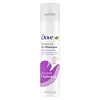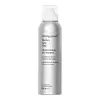What's inside
What's inside
 Key Ingredients
Key Ingredients

 Benefits
Benefits

 Concerns
Concerns

 Ingredients Side-by-side
Ingredients Side-by-side

Isobutane
Propane
Alcohol Denat.
AntimicrobialOryza Sativa Starch
AbsorbentCyclodextrin
AbsorbentZea Mays Starch
AbsorbentFurcellaria Lumbricalis Extract
Skin ConditioningHydrated Silica
AbrasiveHydroxypropyl Arginine Lauryl/Myristyl Ether Hcl
Skin ConditioningTetraselmis Suecica Extract
Skin ConditioningIsopropyl Lauroyl Sarcosinate
Skin ConditioningCetrimonium Chloride
AntimicrobialGlycerin
HumectantMannitol
HumectantPolyvinyl Alcohol
Disteardimonium Hectorite
StabilisingWater
Skin ConditioningParfum
MaskingCitronellyl Methylcrotonate
MaskingLinalool
PerfumingCitronellol
PerfumingBenzyl Salicylate
PerfumingCitral
PerfumingLimonene
PerfumingIsobutane, Propane, Alcohol Denat., Oryza Sativa Starch, Cyclodextrin, Zea Mays Starch, Furcellaria Lumbricalis Extract, Hydrated Silica, Hydroxypropyl Arginine Lauryl/Myristyl Ether Hcl, Tetraselmis Suecica Extract, Isopropyl Lauroyl Sarcosinate, Cetrimonium Chloride, Glycerin, Mannitol, Polyvinyl Alcohol, Disteardimonium Hectorite, Water, Parfum, Citronellyl Methylcrotonate, Linalool, Citronellol, Benzyl Salicylate, Citral, Limonene
 Reviews
Reviews

Ingredients Explained
These ingredients are found in both products.
Ingredients higher up in an ingredient list are typically present in a larger amount.
We don't have a description for Isobutane yet.
Parfum is a catch-all term for an ingredient or more that is used to give a scent to products.
Also called "fragrance", this ingredient can be a blend of hundreds of chemicals or plant oils. This means every product with "fragrance" or "parfum" in the ingredients list is a different mixture.
For instance, Habanolide is a proprietary trade name for a specific aroma chemical. When used as a fragrance ingredient in cosmetics, most aroma chemicals fall under the broad labeling category of “FRAGRANCE” or “PARFUM” according to EU and US regulations.
The term 'parfum' or 'fragrance' is not regulated in many countries. In many cases, it is up to the brand to define this term.
For instance, many brands choose to label themselves as "fragrance-free" because they are not using synthetic fragrances. However, their products may still contain ingredients such as essential oils that are considered a fragrance by INCI standards.
One example is Calendula flower extract. Calendula is an essential oil that still imparts a scent or 'fragrance'.
Depending on the blend, the ingredients in the mixture can cause allergies and sensitivities on the skin. Some ingredients that are known EU allergens include linalool and citronellol.
Parfum can also be used to mask or cover an unpleasant scent.
The bottom line is: not all fragrances/parfum/ingredients are created equally. If you are worried about fragrances, we recommend taking a closer look at an ingredient. And of course, we always recommend speaking with a professional.
Learn more about ParfumPropane is a gas derived from petroleum and natural gas. It is used as a propellant.
This ingredient is most commonly used in shaving cream, hair products, and makeup.